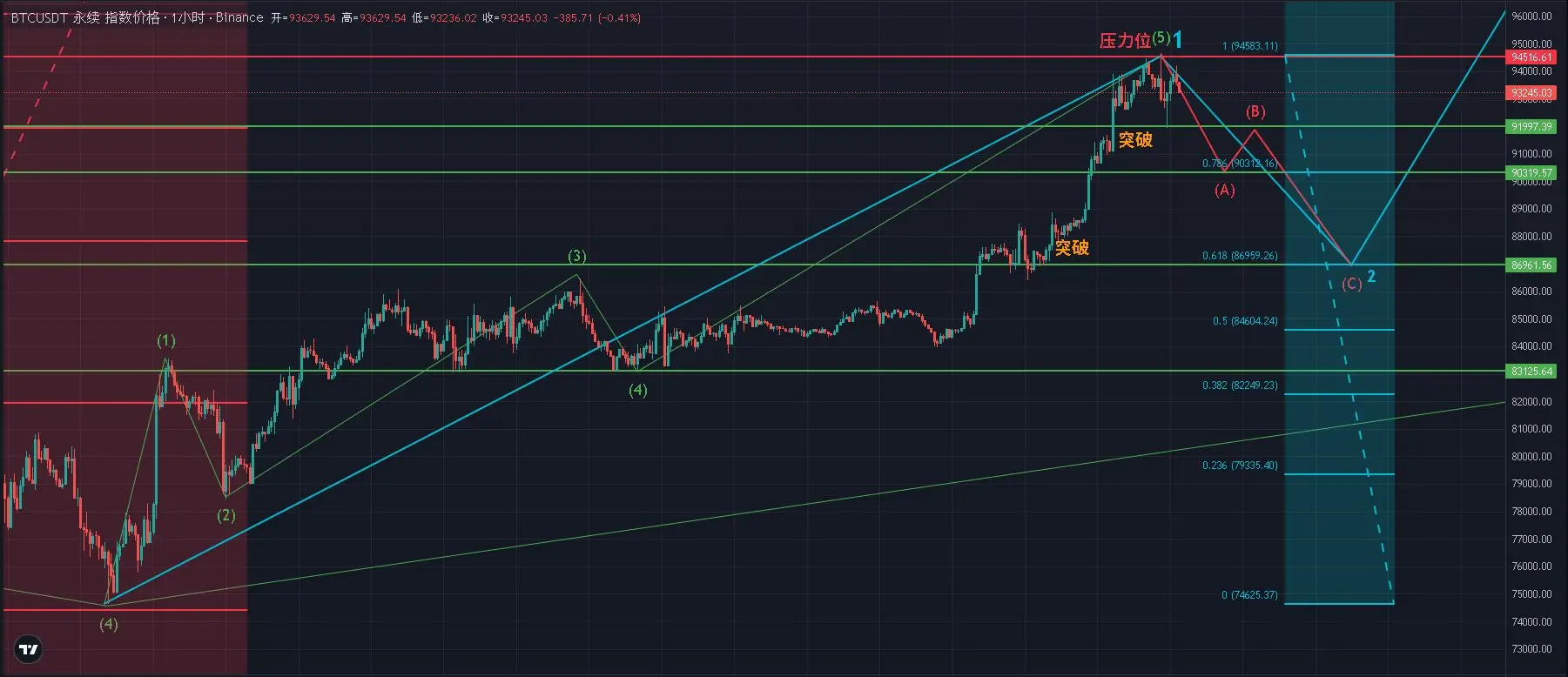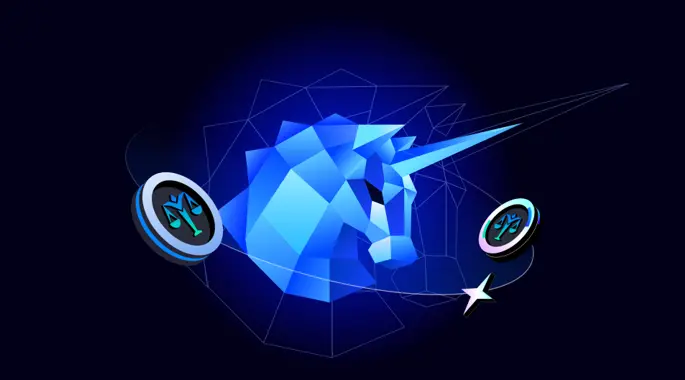Avalanche Q1 生态发展报告:底层技术与生态进展如何?
作者:Cabin VC
2022 年初,加密市场震荡下行,主流公链市值及生态发展受到宏观环境制约。1 月至今,L1 公链 Avalanche 链上生态数据持续表现良好,在市值上较早出现复苏走势。
回顾去年下半年的公链行情,Avalanche 在 DeFi、 NFT、GameFi、Web 3.0 等方向出现局部热点,Avalanche 的机构间合作、子网合作进展带来新的预期,在公链生态、加密社区、社交媒体中均出现各类讨论声音,这种“Social Volume”与 Avalanche 的价格变动出现了一定的相关性。
本报告主要整理 Avalanche 生态近期发展情况、链上数据进展、融资信息等,分析 Avalanche 的数据增长、叙事角度和发展趋势,以供参考。
一、底层技术进展
雪崩协议 Avalanche 于 2018 年立项,2020 年 9 月上线主网,性能目标为 4500 TPS。Avalanche 早期并未直接对标以太坊,其定位于“商业化去中心化金融平台”,为 C 端、B 端均提供可定制化区块链服务。这一点,在 Avalanche 与企业机构的积极合作中已经体现出来。
目前 Avalanche 在加密市场总市值排名第 10 位,公链分类中市值排名前 5%,仅次于 Ethereum、Cardano、Solana、Terra。2021 年 Q4 至 2022 年 Q1,Avalanche 的投资回报率出现了复苏趋势。这种复苏主要基于该生态较为稳定的链上数据增长与生态合作。

(数据来源:https://cryptorank.io/)
1、技术进展
Avalanche 以三链架构为特点,形成了较高的技术识别度。Avalanche 构建了交易链(X-Chain)、合约链(C-Chain)、平台链(P-Chain),分工不同,可互操作,属于异化网络架构,并采用 DAG (有向无环图)数据结构优化了 PoS 共识机制。
(* 在 Avalanche 的三链架构中,X 链用于创建和交易链上资产、 P 链用于协调验证节点,以及创建及追踪子网。C 链用于创建和执行 EVM 智能合约、构建 DApp,类似 Avalanche 的应用层。)
相比于以太坊,Avalanche 的结构增强了区块链在不同需求下的可组合性,同时以低延迟、高吞吐量和理论安全阈值 80% 为项目特点。目前,其 C 链观测到最大 TPS 达到 869。公链吞吐量上,据统计,Avalanche 上 Trader Joe 每秒交易 31.65 笔,平均确认时间 3.75 秒。
Avalanche 在过去 12 个月内的代码更新速度极高,据 cryptomiso ,对比同赛道生态,Avalanche 的代码更新速度仅次于 Sonala 两个排名位置,其更新频率在去年 6 月及 7 月出现峰值,但在之后数月逐步放缓。共 59 位贡献者共提交了 3047 次更新。

(数据来源:github;排名统计:cryptomiso.com)
2021 年 Q4,Avalanche 进行了 Blueberry 升级,该升级支持开发者创建自定义虚拟机及自有规则的独立区块链,这是子网架构的重点。
Avalanche P 链的子网架构(Subnet)属于该公链独特的横向区块链扩展方法。可达到“平行链”概念的部分性能,子网之间可资产转移(但这与互联网计算机术语中的区块链 Subnet 仍有区别)。P 链 To B 性质强,可定制,与 Avalanche B 端合作关联度高,这让 Avalanche 的标志性叙事继续扩展。预计模块化区块链的叙事将会得到市场接下来的关注。
2、开发环境
据官方数据,Avalanche 生态系统开发了 428 个项目。Avalanche 开发活动的数量在今年 1 月份达到高点,且账号活跃程度稳定:

(数据来源:santiment)
另据不完全统计,Avalanche 在 2021 年的开发人员增长约 3 倍,Avalanche 与 Polkadot、Solana、NEAR、BSC、 Terra 的开发者增长率均超过以太坊。
3、网络 / 平台活跃度
Avalanche 现有生态丰富度高。据官方统计,截至 2022 年 2 月,Avalanche 主网现有验证节点超过 1200 个,Avalanche 生态内已开发项目约 428 个。这些应用主要包括基础设施、开发工具、文化类(包括 DAO/NFT/Gaming)、DeFi、企业机构、理财等大类。
近几个月,Avalanche 生态内, DeFi、NFT、GameFi 均是生态数据增长的主要推动。
Avalanche 于去年 2 月推出与以太坊的双向跨链桥(AEB),Avalanche 跨链桥直接推动其 DeFi 锁仓量在去年 8 月的爆发,并在一定程度上刺激了其他第三方跨链桥的开发。据 Dune Analytics 数据,相比于其他同类型以太坊桥,Avalanche 的太坊桥的总 TVL 达 59.58 亿美元,数据位列第一:

(数据来源:Dune Analytics https://dune.xyz/nadimchamoun/Avalanche-Bridge)
同期,官方公布的“ 1.8 亿美元的流动性挖矿奖励计划 Avalanche Rush”加速了这一点。去年 8 月,Avalanche单月 TVL 从 2.2 亿美元升至 20.1 亿美元,表现强势。Avalanche 在之后的 12 月 TVL 超过 Solana ,在公链中排名第 4。
由于宏观市场环境受限,DeFi 生态数据的提升对 Avalanche 市值表现有一定滞后性,这种趋势在 2021 Q4 及 2022 年 Q1 有所体现,在相对疲软的市场环境下,Avalanche 上一季度的活跃地址、交易量、TVL 及市值均创下历史新高。
近三个月, Avalanche C 链上总地址累计达 215.4 万个,活跃地址数在 1 月份达到了 80 万的峰值,TVL 呈现回升趋势;截至 3 月份,Avalanche C 链总交易量超过 1 亿。
二、生态进展
复盘以上关于 Avalanche 生态的数据增长,我们认为数据增长除了技术特性与生态支持等因素外,还在于 Avalanche 去年增长的 “Social Volume”, 这来自于 Avalanche 的机构间与生态间的合作,并由此带来的社区增量、媒体讨论、生态拓展等多个方面。
2021 年 4 月,SushiSwap 最先决定扩展到 Avalanche 生态中,同期 8 月,Avalanche 最先一批受到了以 Aave、Curve 等头部 DeFi 协议宣布的「DeFi for the People」普惠金融计划正面影响。Aave、Sushiswap 协议扩展到 Avalanche 生态内,这些协议的热度也带动了 Avalanche 的原生 DeFi 蓝筹项目 Pangolin 、Trader Joe 、BenQI 的数据增长。
Wonderland Finance ( TIME ) 是 Avalanche 生态中最具影响力与话题性的代表性 DeFi 项目之一。Wonderland 由 Olympus DAO 在 Avalanche 分叉而来,后一度颠覆了 OHM 的市值。
该案例中,Avalanche 的低费用叠加社区营销及媒体传播,影响力显著。值得注意的是,Olympus DAO 及其创始人 Daniele Sestagalli 获得了包括 TikTok 在内的社区讨论,除了加密社区,该项目吸引到了行业外增量用户的关注与讨论。
NFT + GameFi 在年底承接了 Avalanche 生态的热度,出现局部热点。“2021 MLB Series 2 Baseball NFT 系列”、Cradaba、DeFi Kingdoms 等热门 NFT 及 GameFi 项目相继出现。
以上热点项目爆发同期,Avalanche 生态的市场讨论程度“Social Volume”几次达到高点。在 2021 年整个公链生态的市场行情中,海外社区提出的“Solunavax”概念也展示出了 “Social Volume”带来的 Meme 属性,“Solunavax” 代表 Solana、Terra、Avalanche ,表现出加密社区对于这三个以太坊竞争力链的浓厚情绪。
官网流量也能展示出这一点,1 月至 3 月,Avalanche 总访问量达 122.8 万,略低于同赛道 Solana 的 156.6 万访问量;在访问量来源中,Avalanche 在 Reddit 和 Youtube 两个来源中占比分别达 31.33% 及 14.8% ,社区氛围较强。

(数据来源:similarweb)

(数据来源:similarweb)
相对于媒体及社区话题讨论程度的峰值区间,“Social Volume”与 Avalanche 的价格表现体现出一定的相关性,且有一定的滞后。考虑到 2-3 个月的滞后区间,预计 Avalanche 链上数据及生态合作的正面影响仍将支持其市值回升。

(数据来源:Santiment)
目前,Avalanche 链上数据增长主要来自 C 链。同时,C 链的数据表现同样影响着市场对 P 链(平台链)的预期。2022 年 3 月,Avalanche 基金会宣布推出子网激励计划,直接推动 Avalanche 网络的质押率达 50.65%。
在这种情况下,预计 2022 年 Avalanche 的机构间合作将成为市场观察重点。子网结构及模块化区块链的叙事能够进一步推动 Social Volume 数据增长。
1、生态梳理及代表样本
(1)DeFi
Avalanche 目前 TVL 为 113 亿美元规模,相比于 2021 年 12 月的 137.9 亿美元历史高点,下降约 18% 左右。
Avalanche 生态现支持 174 种 DeFi 项目。TVL 排名前十的项目为:AAVE、Trader Joe 、Curve、BenQI、Platypus Finance 、Multichain、Alpha Finance、Wonderland、Yield Yak、Beefy Finance。其中,AAVE 占比达 29.52%,Avalanche 原生项目占比达 40% 以上。

(数据来源:Defillama)
Avalanche 生态较为丰富,官方原生或获得官方生态基金支持的项目资源良好,在种子轮阶段基本都获得了数百万美金的支持。代表样本整理如下:
Platypus
https://platypus.finance/
Avalanche 原生的稳定币互换协议。Platypus 将所有的稳定币聚集在同一个资金池,流动性彼此互通,以实现更低的交易滑点。
Platypus 在私募轮获得 336 万美元,公募轮获得 105 万美元,此外,还获得了 Avalanche Foundation 11.4 万美元的资助。
Defrost
Defrost 是 Avalanche 原生的算法稳定币协议。是 DeFi 项目 Abracadabra 的强势竞品之一。
Defrost 获得了 330 万美元的融资,由 Three Arrows Capital 和 Defiance 领投,Avalaunch、CMS Holdings、Hailstone 等参投。
Pangolin
Avalanche 首个原生 DEX,可类比于 Uniswap 的自动化做市商(AMM),通过 Avalanche 底层性能提高交易速度并降低交易成本。
Pangolin 目前 TVL 在 2.2 亿美元规模,市值约 2500 万美元规模。
Trader Joe
Trader Joe 属于 Pangolin 竞品,于去年 11 月单月用户量增长 195%,后逐渐成为 Avalanche 链上首选平台。已与 Snowball、Penguin Finance 等项目集成。
Trader Joe 目前 TVL 在 15.2 亿美元规模,市值约 2 亿美元规模,属于 Pangolin 竞品。最新一轮战略性融资规模为 500 万美元。
Snowball
Avalanche 上的首个稳定币 AMM,是一个复利挖矿、IDO 和稳定币机枪池。可将其视为附加收益耕种产品的原生 Curve 协议。目前其稀释后市值约 430 万美金左右。
(2)借贷
BenQI
BenQI 是 Avalanche 上的借贷产品。BENQI 战略融资获得 600 万美元,由 Ascensive Assets 领投。
BenQI Finance 在 2021 年 4 月的私募融资中获得约 600 万美元。
(3)NFT
Kalao
Avalanche 链上的 NFT 交易平台,聚合了 Avalanche C 链上所有可用 NFT。该平台引入了 VR 技术和元宇宙概念,可进行虚拟直播。
Kalao在两轮融资中共获得约 330 万美元。
ToppsNFTs https://toppsnfts.com/
2022 年 Q4,全球多元化消费品公司、美国球星卡收藏品平台 Topps 于 Avalanche 推出 2021 MLB Series 2 Baseball 系列 NFT 。该公司的体娱产品包括美国职业棒球大联盟、美国职业足球大联盟、欧洲冠军联赛、德甲等等,行业影响力强。
该 NFT 系列此前曾用 WAX 区块链发行,后迁移至 Avalanche,具有一定的代表性。
(4)Gaming
Crabada
Crabada 是 Play to Earn 概念的游戏。与 Axie Infinity 模式类似,玩家持有寄居蟹来参与游戏并赚取 CRA。
早期的 Crabada 受到了生态内的支持,其战略私募融资为 60 万美元,投资方包括了 Avalanche 及 Avalaunch(Avalanche 生态的 IDO 平台)。
Imperium Empires https://imperiumempires.com/
Avalanche 生态中热度较高的 GameFi 与元宇宙概念项目,是与 StarAltas 进行对标的 3A 级游戏之一。Imperium Empires 于 2021 年 12 月获得 210 万美元种子轮融资。目前其市值约 800 万美元左右。
Ascenders
Ascenders 是一款科幻、开放世界的角色扮演 3A 级生态链游。该项目系 Avalanche 生态新一批获得融资的项目之一,其于 3 月完成 640 万美元私募轮融资,由 Paramount Capital、Three Arrows Capital、Sino Global Capital 和 Merit Circle 联合领投。
(5)保险
Degis
Degis 是基于 Avalanche 生态的首个去中心化聚合保险协议,2021 年 2 月,Degis 完成 300 万美元天使轮和种子轮融资。
(6)孵化器
Colony colonylab.io
Colony 是基于 DAO 的社区驱动的基金 ,目的在于促进 Avalanche 生态系统发展。2021年10月份,Avalanche 生态项目孵化器 Colony 完成 100 万美元种子轮融资,后再次获得 GBV Capital、Foresight Ventures 和 Avalanche 基金会共同领投 1850 万美元融资。
2、生态扶持方向
Avalanche 资金相对充裕,2021 年上半年成立亚洲产业基金 AVATAR,提供 2000 万美元将用于建设 Avalanche 生态,包括 DeFi、NFT 以及行业基础设施项目。这里的联合投资基金包括区块链基金 A&T Capital、SNZ、NGC Ventures 等。
2021 年 11 月,Avalanche 基金会推出超过 2.2 亿美元的激励计划 Blizzard。激励计划将专注于 DeFi、企业应用、NFT 及文化类产品开发者。Blizzard Fund 的资金主要来源于 Avalanche 基金会、Ava Labs、Polychain 资本、三箭资本、Dragonfly 资本等。
2021 年 12 月至 2022 年 3 月初,Avalanche 基金会与 Web3.0 开发平台 Moralis 共同进行其最大规模的黑客松,目的在于加速生态内 DApp、Web3 应用和 DeFi 项目的开发。
从官方公布的获奖名单来看,获奖项目(包括各类赏金获得者)中,有 DeFi 概念 8 个,Web3.0 概念 5 个、元宇宙概念 3 个,投资管理 3 个、NFT 3 个、GameFi 2 个、工具及基础设施 2 个、DAO 项目 2 个、另覆盖了去中心化存储、稳定币、数据分析平台、生态服务平台。
相对于其他公链而言,Avalanche 生态支持的热点主题范围更广,除了 DeFi、NFT 等热点赛道,Avalanche 对于企业级应用、Web3.0 应用同样有所侧重,这些赛道中项目数量的增加,能够进一步加强Avalanche 生态的识别度。
2022 年 3 月,Avalanche 基金会宣布推出「Avalanche Multiverse」激励计划,总计提供价值约合 2.9 亿美元的 400 万枚 AVAX Token,以推动子网增加。同时,Avalanche 核心开发商之一 Ava Labs 也为子网开发提供协助和支持。
3、机构间合作
Avalanche 在企业级合作上资源占优。由于企业间合作带来的影响力和叙事性。预计非区块链原生企业级机构采用 AVAX 子网作为区块链开发网络,该方向或将成为 Avalanche 下一个叙事重点。
目前比较关键的机构间合作案例有:
(1)NFT:
Avalanche 与球星卡和纪念品公司 Topps 的合作带来了较强的影响力,Topps 是美国历史最悠久的收藏品公司之一 ,现已被体育 NFT 平台 Candy Digital 的母公司 Fanatics 收购。
(2)ILO:
2020 年,Avalanche 开发团队与美国律师事务所 Roche Cyrulnik Freedman LLP 和咨询公司 Republic Advisory Services 合作,提出了首个初始诉讼产品(Initial Litigation Offering)概念,这是一种向所有投资者开放的基于区块链的诉讼融资产品,旨在为民事诉讼提供部分资金。
(3)STO(数字证券发行):
2020 年 12 月,Avalanche 与 Securitize 集成。Securitize 是美国数字证券发行(STO)领域的头部机构,持有 ATS 牌照。集成之后,Securitize 可使用 Avalanche 区块链进行私人证券的发行和管理。由于Avalanche 的三链架构相对灵活,能够在网络层嵌入合规条件,以支持数字证券发行。
(4)支付:
今年 3 月份,数字支付平台 Wirex 宣布整合 Avalanche,以通过 Avalanche 网络接收、发送、存储和交换 AVAX Token。该支付平台拥有 450 万传统领域用户。
(5)其他企业及合作:
2021 年 11 月,Avalanche 发布了与德勤进行合作的公告。德勤决定将 Avalanche 平台用于其“Close as You Go (CAYG) ”救灾平台,以通过区块链技术提高效率并降低成本。该合作为传统企业进入 Web3.0 给出了很好的案例。
(6)子网进展(Subnet)
3 月初,Avalanche 生态内高热度 GameFi 游戏 Crabada (寄居蟹)团队推出了专用于游戏的区块链 Swimmer Network,这是 Avalanche 最新的子网。Crabada 是一款采用了类似于 Axie Infinity 的机制,游戏合约取得了超过 2000 万笔交易。
NFT 游戏项目 DeFi Kingdoms 所主导的 DFK Chain 是即将推出的子网之一,在前述的“子网激励”计划中,Avalanche 为 DeFi Kingdoms 预留了 1500 万美元的奖励。
三、融资规模、投资机构及生态联动性
Avalanche 主要融资轮次信息整理如下:

Avalanche 早期的投资机构主要包括:a16z,Polychain,Bitmain,NGC Ventures,Dragonfly Capital、Fundamental Labs、Galaxy Digital、NGC Ventures,Dragongly Capital、SNZ、IOSG Venture 等机构。
2020 年 7 月,IOSG Ventures 对 Avalanche 进行战略投资,IOSG 支持了其在部分地区加密市场的战略布局及市场规划。
受益于投资机构对以太坊竞争链的看好,Avalanche 最新一轮超过 2.3 亿美元的融资是其目前获取的最大投资。该次融资由 Polychain、Three Arrows Capital(三箭资本)等头部机构参与。
其中,Polychain 、三箭资本在公链赛道投资经验丰富。Polychain 是最早的原生加密对冲基金之一,也是 Nervos、Cosmos、Tezos 等项目的投资人之一,并于去年先后加注 Solana、Avalanche;三箭资本同时也领投了 NEAR Protocol、Luna Foundation Guard (LFG) 等同赛道项目。
在投资布局上,据不完全统计,Polychain 去年所布局赛道中,公链项目占比高达 36.8%,DeFi 占比约 42.1%;三箭资本的投资项目 82% 份额针对于 DeFi 项目,其次即为对底层技术类的投资。两家领投机构在公链赛道投资经验丰富,且在 DeFi 类项目上投资广泛,能够为公链生态发展持续提供资源。
此外,在 Avalanche 生态内项目的融资规模来看,大部分原生项目及合作项目均受到 Avalanche 生态基金支持,早期种子轮融资规模约在 200 万 - 500 万美元规模,后续轮次往往估值在千万美元规模之上,生态内项目资金支持力度较强。
四、趋势与总结
Avalanche 的起步相对于同赛道的 Solana 较晚,但已经形成网络效应,在市场上的声量增强。其在技术开发及市场宣传进度相对强势,原生产品数量相对更多,机构间子网合作预期加强,生态系统多样性更为明显。
Ava Labs(Avalanche 客户的核心开发者)下一个子网将搭建一个专为机构 DeFi 设计的、具有原生 KYC 功能的区块链,这与 Golden Tree Asset Management、Wintermute、Jump Crypto、Valkyrie、Securitize 等机构的合作相关,“机构的 DeFi 采用”具有良好的话题性,推动 Social Volume 增长。
预计在 C 链数据健康增长的前提下,Avalanche 子网构建符合市场对于 Web3.0 时代的构想,Avalanche 的发展方向之一在于:企业级机构搭建 Web3.0 的基础设施。
仍需要注意的相关风险点有:
* 大流量高速涌入可能会暴露出一些性能问题。Avalanche 曾因 DEX Pangolin 负载过高触发跨链功能错误,在社区内曾引起一定短期恐慌。
* 现有子网数量相对较少,子网搭建进度难以准确预计。
* Avalanche 生态内早期项目数量较多,生态内存在竞争关系。
* 多链生态环境下,Avalanche 生态与其他头部跨链生态将长期存在竞争关系。










